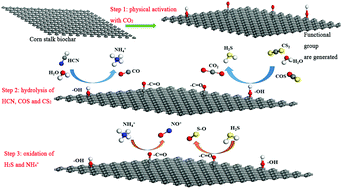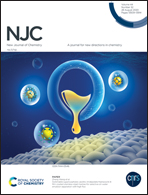Surface characterization study of corn-straw biochar catalysts for the simultaneous removal of HCN, COS, and CS2
Abstract
The influence of the surface characteristics of corn-straw biochar catalyst for the simultaneous removal of HCN, COS, and CS2 was studied. The results showed that the corn-straw biochar catalyst activated by CO2 exhibited excellent catalytic performance for HCN, COS, and CS2 conversion. The results of CO2–TPD, EPR, TG/DTA, BET, XRD, Raman, and DRIFTS showed that various preparation conditions had a great influence on the surface characteristics. The microporous structure, amorphous structure, basic sites, oxygen vacancies, and surface functional groups played crucial roles in the simultaneous removal process. The carbonization temperature could affect the pore structure and the amorphous structure, and the activating agents affected the basic sites and the oxygen vacancies on the surface. The activation temperature and the flow rate of the activated gas could change the reaction speed, thereby affecting the catalytic efficiency. Furthermore, DRIFTS measurements were carried out to investigate the reaction mechanism. H2O molecules could be converted into hydroxyl groups, which promoted the hydrolysis reaction. HCN was hydrolyzed into CO and NH4+, and CS2 and COS were hydrolyzed into CO2 and H2S, respectively. Finally, H2S and NH4+ were oxidized to S-O and NO+, respectively.



 Please wait while we load your content...
Please wait while we load your content...